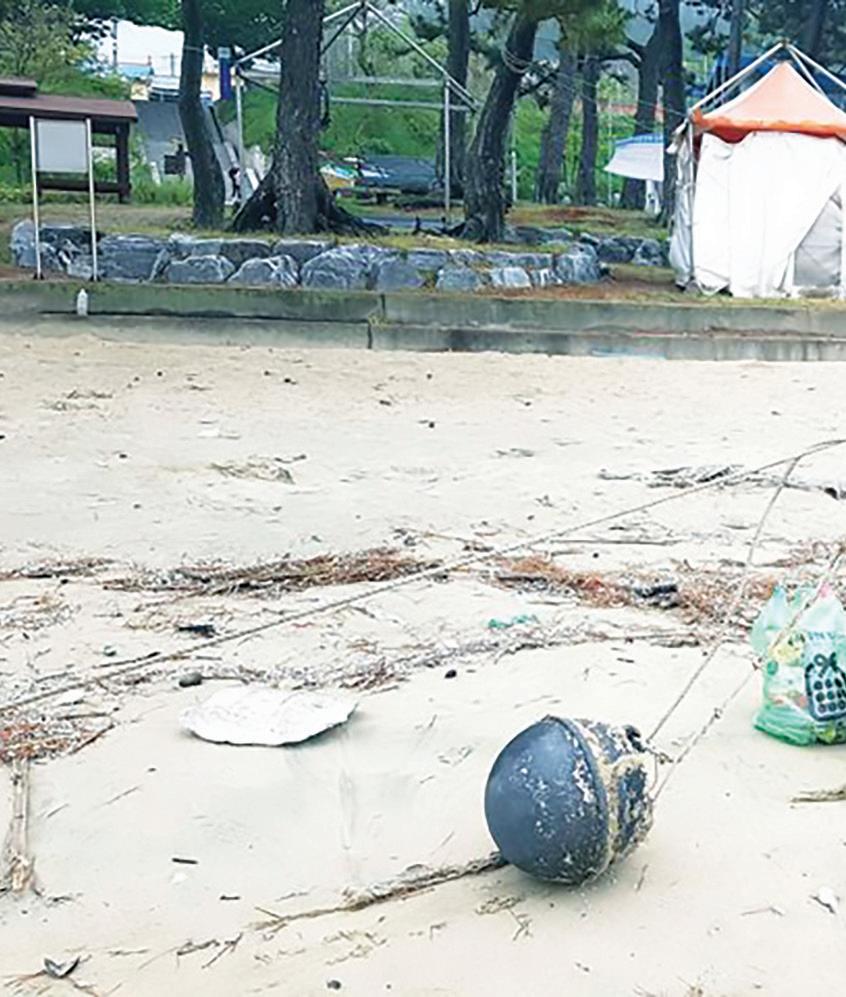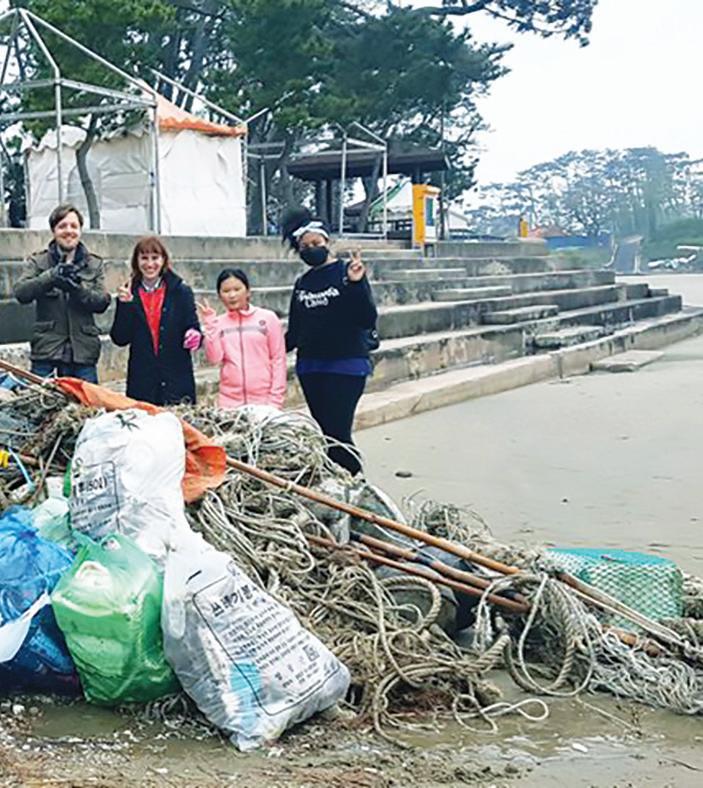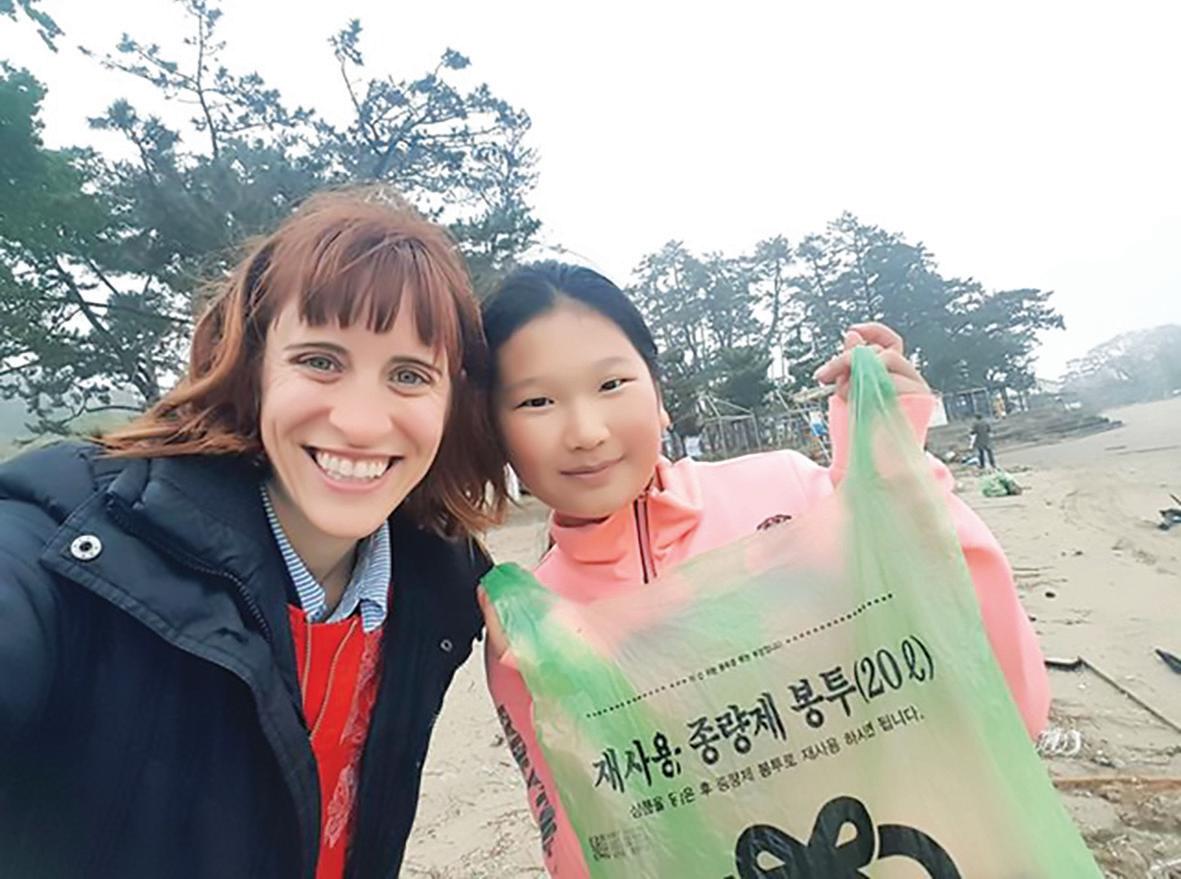
10 minute read
Doing What We Can to Care for the Environment
Written by Michael Goonan
Climate change. A hole in the ozone layer. Mountains of plastic in our oceans. Acid rain. Microplastics. If you take an interest in environmental issues, you’ve probably heard of at least a few of these. Th e more one reads, the more overwhelming it all can seem, and the more one might be tempted to throw up one’s hands and say “Why even bother? As an individual person, there’s no way I could make a diff erence.”
Advertisement

I have certainly been in that mental space myself. Without a doubt, it is possible to fi nd all kinds of justifi cations for eco-despair. But what if, instead of spending all of that time and energy fi nding reasons to lose hope, we each spent it on taking just a little bit of action? In the words of Desmond Tutu, “Do your little bit of good where you are; it’s those little bits of good put together that overwhelm the world.”
I know, I know. As much as I love that quote on my more optimistic days, if I read it in an article like this, I’d be as tempted as anyone to say “It must be nice to be so blissfully naive,” too. But hear me out.
I write this article not as an expert but as an ordinary person. I am not a scientist, an activist, a philanthropist, or a public fi gure. In today’s world, many of us are fed the message that if we are not a “very important person” of this sort, our eff orts to better the world are a waste of time. We do, however, retain an inner knowing of the truth that change happens, little by little, when we all make the personal decision to live it in some small way in our own lives. From there, we can get friends, family, and those in our community involved. And there is an unknowable ripple eff ect that goes far beyond that. It may not be immediately visible to us, but that does not diminish its importance.

Th is line of reasoning can help us to uncover some hope within the usual frame of reference of our culture – a world of “winners” and “losers” – in which it is theoretically possible for an underdog to win out over the proverbial “forces of darkness.” But this still leaves many of us feeling a sluggish, half-baked kind of hope. We are “behind” in the game, as it were, and it’s not easy to make a big comeback in the bottom of the ninth inning.
In his thought-provoking book The More Beautiful World Our Hearts Know Is Possible, Charles Eisenstein challenges us to question this entire paradigm in order to rediscover the true power ordinary people have to make a positive difference in the world:

“I spoke recently with Kalle Lasn, the founder of the radical magazine Adbusters and a man who has devoted his entire life to promoting and practicing hands-on activism. He told me that for some time now he hasn’t been spending much time on politics or the magazine because he is taking care of his ninety-five-year-old mother-in-law.... My dear reader, can you countenance a reality in which to save the planet, we have to neglect our ninety-five-year-old mother-in-law? There must be a place in our understanding of how the universe works for the intimate, uncalculated acts of service that are such a beautiful part of our humanity.”
I love this passage because it jolts the reader right out of her usual way of thinking. Instead of giving undue weight to thoughts about numbers and instrumentality, she is challenged to ask herself a different question: “What is the most beautiful way I can live? At the root of it, what makes me feel the most alive?” For most people, engaging in acts of service – and, where possible, building community while doing so – is just what the doctor ordered. And what’s more, instead of going around sounding like an “alarmist” or “prophet of doom,” one can’t help but convey a joy that is infectious to others.
Originally, for this article, I simply intended to promote a nascent beach litter cleanup program I’ve started in Yeonggwang, where I live. I intended to give you a laundry list of problems, statistics, and possible solutions combined with a “call to action” for others in Jeollanam-do to get involved and organize similar actions in communities in which you find yourself. Don’t get me wrong, I would still love you to do that, and if you want to collaborate on such things, I encourage you to contact me. Beyond just promoting my little litter cleanup program though, I wanted to share a greater message that I hope will inspire more than just that.

The crux of my article is this question: What is it that makes service to the planet worthwhile? Again, I find Eisenstein’s point about the satisfaction in caring for one’s sick, elderly relative instructive. Do most of us care for our elderly friends and family because we hope to get an inheritance? Because we think that our care will result in many more years of productive life for the person? Because if we don’t care for them, others will judge us and say we are neglecting someone who needs us? While these instrumentalist reasons may motivate a person to some degree, most readers would agree that they are inadequate on their own, even dehumanizing. What really motivates us to care for that special elderly person is love. The same is true when it comes to our planet. As Eisenstein writes so
beautifully in Climate: A New Story, “Caring about other beings, about life, about our planet is aboriginal to our humanness.”
And so, dear reader, beyond anything else, I urge you to nourish this love. Don’t let others disparage you as a “tree hugger,” “naive,” a “do-gooder,” or anything else. Caring for the planet is a natural and noble thing, and I salute you for whatever you may already be doing to act on it, however large or small. We can do so much more together, and in the process, we can make friends, have a good time, and spend quality time in the great outdoors. If you are interested in sharing ideas for how we can do this in Jeollanam-do, please do get in touch with me. My email address is below. At the moment, my vision is to organize litter cleanups throughout Gwangju and Jeollanam-do. I look forward to making that vision a reality, and perhaps expanding upon it with your help.

Photographs courtesy ofMicheal Goonan.

The Author
Michael Goonan is a writer, teacher, and wanderer from Pennsylvania. He currently works as a middle school teacher in Yeonggwang and previously taught in the Czech Republic and Australia. As a philosophy major during his undergraduate years, he is passionate about living a life with “love of wisdom” at its foundation. He writes about his travels, human nature, and other topics of interest at goonan.us. Email: goonanm2@ icloudcom

Time to Buy Some Earplugs! Noise Pollution in Korea
Written by Cami Ismanova
Have you ever paid attention to the sounds that occur around you? Your neighbor playing alternative rock with open windows, bikes hastening through the maze of gray streets, or maybe cats having an unbearably good time in spring. All right, those were unpleasant ones. How about a crackling fi re in the cold autumn evening, the silence when children are having a nap, or cash fl ying out of an ATM? Satisfying, are they not? Th e world around us is fi lled with a plethora of sounds. Some of them are calming and pleasant; others are ear-splitting.
To determine a sound level, acousticians and audiologists measure sounds by using a logarithmic unit called a decibel (dB). Decibels are usually used to measure the loudness of a sound, while hertz (Hz) is applied as an estimating unit to a frequency. Taking the measurement of sound levels helps acousticians draw a line between innocuous sound and injurious noise, thereby verifying what sound levels are potentially harmful to humans and animals. Th e threshold for audible sound is 0 dB in humans. Our normal speech, not including yelling, is around 60 dB. Above this, 86 dB is comparable to city traffi c, including cars honking, brakes screeching, and engines roaring both day and night. Other sources of noise like motorbikes produce 95 dB, sirens produce 120 dB, and fi recrackers can be higher than 140 dB. Sounds that exceed 120 dB might cause discomfort, and any source of noise that surpasses 130 dB will cause pain. Th e sound of a sonic boom equals more than 200 dB and if standing in its proximity, there’s a good chance it would kill you. Th at is how loud it is!
Sometimes, we stop noticing the noise around us because we simply get used to it. Kettles invite us to a cup of pomegranate tea by whistling loudly in the kitchen. Meanwhile, refrigerators hum quietly, keys rattle, doors groan, papers rustle, and printers whir totally unnoticed. We do not always pay attention to these because sounds tend to merge into one soundwave that vibrates around without being noticed, which is especially true in urban areas where life is bustling with activity. Here in Korea, it is almost as if we live in beehives of sound – some are calm, while others are full of life and noise that oft en buzz too loudly. Consequently, we can add noise pollution to the long list of environmental concerns related to modern life.Th ere has been a lot of research going on related to the topic of noise-induced hearing loss (NIHL) in Korea. In tests done by a group of medical researchers at Seoul National University, around 2,870 middle and high school students went through audiometric testing and surveying in 2016. Th e results demonstrated that 17 percent of the tested students showed slight hearing loss. Th e research states that the surge in usage of personal listening devices and local gaming centers negatively contributes to the development of NIHL, which also happens to cause a deterioration in academic performance. NIHL oft en develops via professional exposure in the industrial and military fi elds but also in recreational and social areas. In addition to hearing loss and lower academic performance, noise pollution causes insomnia, anxiety, stress, headache, high blood pressure, increased cholesterol levels, and disturbances in the nervous system. In short, this cannot be good. However, NIHL is 100 percent preventable if precautions are taken.
If noise aff ects our health in such a detrimental way, can you imagine how it impacts wildlife? Animals use sound to hunt, to attract mates, to warn about a threat nearby, to share their location, and more. Birds, mice, and whales can sort of sing, while dolphins even chit-chat using their peculiar “whistles.” As our world gets rapidly industrialized, noise and light pollution disturb natural ways of life for the vast majority of animals.
How can we fi ght against noise pollution to prevent the deterioration of our health? Th e process consists of a set of simple daily tasks as well as complex environmental policies. Th e fi rst solution is to plant more trees, which will also be benefi cial for our air quality. Secondly, legislative laws imposing restrictions in urban areas on excessively loud noises should be enacted and enforced. Th irdly, sources of loud noise, like construction projects, can be limited by using sound-absorbing materials. Last but not the least, we can buy a set of earplugs to give our ears (and minds) a respite from disturbing decibels such as neighboring students partying at 3 a.m. and listening to Cardi B.
The author
Cami Ismanova is a student at Chonnam National University majoring at economics. She loves to travel, listen to jazz, and read books. She is into drawing still lifes, growing plants, and writing these days. Instagram: @camidisman










